Luc brings the carillon back to the abbey
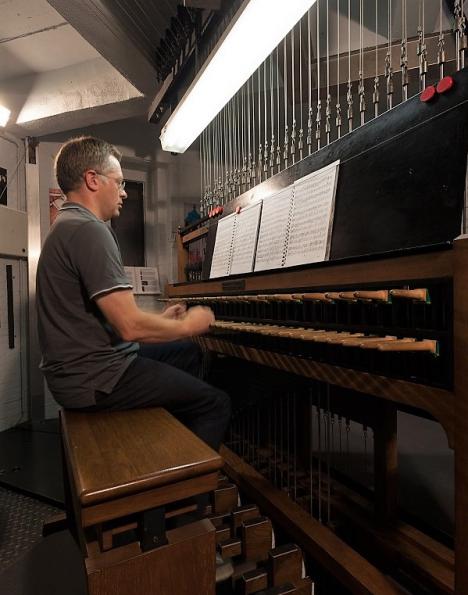
“The Peace carillon is a reality thanks to a sequence of lucky coincidences”
The new Peace carillon will resound from the tower of the abbey church on November 11. This is a unique event because it's the very first reconstruction of a historic carillon. One man will glow with pride: university carillonneur Luc Rombouts, who is behind the reconstruction.
Carillonneur Luc Rombouts comes from Hasselt and currently lives in the Kempen in Zoersel. But he studied in Leuven and always remained connected to the city. “As the university carillonneur I am in Leuven 2 to 4 days a week”, he explains. “And Park Abbey isn't very far from the Great Beguinage or Ladeuzeplein, where I play the carillon. I love visiting Park Abbey for its unique surroundings.”
When did you become acquainted with Park Abbey?
I first visited the abbey when I was in secondary school. I took piano lessons at the Municipal Academy of Music in Hasselt at the time. For summer school, my father drove me back and forth to Korbeek-Lo, where my piano teacher lived. To make the days more pleasant, he showed us some interesting things in the neighbourhood. That's how we discovered Park Abbey.
Did you return to the abbey frequently?
Yes because it's a green enclave, an island within the hustle and bustle of the city. It offers functions that are not monastic yet are in harmony with how life used to be. For example, PARCUM, the organic farm and the Alamire Foundation. They don't have a direct link to monastic life but they are a logical continuation of what used to occur in the abbey.
A vast number of people are connected to the abbey: they had their wedding photos taken here, they resided here as a student… I have never know a spot that generates so much solidarity. And this site could just as well have disappeared a few decades ago because it had fallen into serious disrepair. Now it's one of the best preserved abbey complexes in Western Europe.
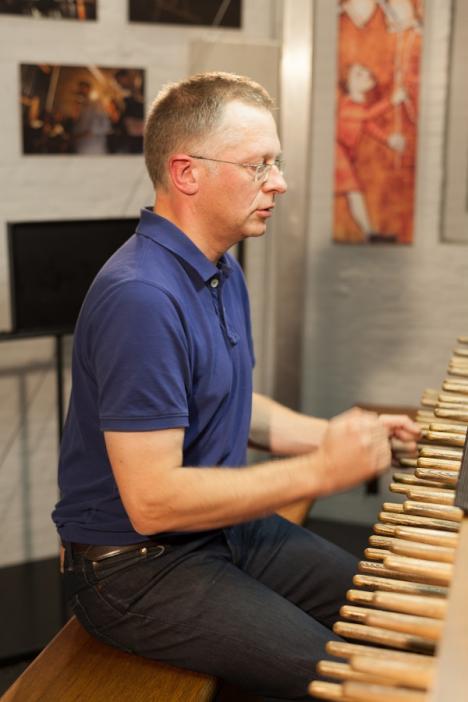
And now something is being added that was not preserved: the Peace carillon will soon resound on the abbey site.
That's right. This is a unique event because it's the very first reconstruction of a historic carillon. And it's all down to a sequence of coincidences.
What do you mean?
Well, even my passion for the carillon is based on coincidence. At the end of my studies, I wanted to learn a new musical instrument. At that time, in 1983, the carillon in the library tower was being restored and a housemate showed me an article announcing carillon lessons at the KU Leuven. I did not hesitate for long. A year later I attended the carillon school in Mechelen. During a History of the Carillon lesson I came across Park Abbey once again.
Was the carillon in Park Abbey of historic value?
Absolutely. At the time it was assumed that the first automatic carillon melody resounded here - a milestone in the history of the carillon. In 1479 a hymn to Mary played automatically every hour because the Norbertines have a special reverence for Mary. That was described in chronicles. Later I discovered that a carillon in England was even earlier (laughs). That's remarkable because the carillon originated in the Low Countries.
As a result the carillon was mentioned in the exhibition ‘Five centuries of bells and bell-founders in Leuven'.
That's right; that was in 1990. I wrote an article about the bells and the carillon at Park Abbey. It was purchased by prelate Hieronymus (Jerome) de Waersegghere in 1730. The carillon was moved to St Peter's Church in 1811 where it was destroyed during the Fire of Leuven in 1914. I concluded my article by saying that a carillon should perhaps be installed in the Park Abbey once again. That was more of a witticism because it wasn't very realistic.
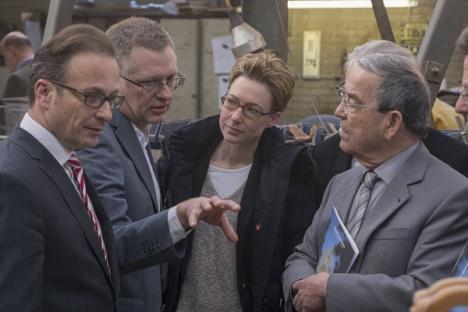
So how did it come about?
The idea resurfaced in 2012 after a lecture for the Friends of Park Abbey (vzw Vrienden van de Abdij van ’t Park). I spoke with Jos Daniëls, chairman of the Park Abbey management committee. Jos was my boss in a distant past, when he ran ABB Verzekeringen. At the time he was looking for a gift for Leuven to celebrate the 75th anniversary of ABB. The bells and carillon association of Leuven, Campanae Lovanienses, suggested the idea of a new ‘Meester Jan’. That is the statue that chimed the hours at St Peter's Church until the Late Middle Ages. Meester Jan was lost, together with part of the tower, in the 16th century. That's why ABB Verzekeringen gifted the City of Leuven with a new, gold-plated Meester Jan in 1998.
And you wanted to achieve the same with the carillon in Park Abbey?
That plan wasn't very concrete (smiles). Reconstructing a carillon is quite different than a statue with one bell. Fundraising for a carillon is not easy and Leuven already had four carillons. It was a lucky coincidence that Jens Metzdorf, the city archivist of the German city of Neuss, discovered that soldiers from his city bore a heavy responsibility for the Fire of Leuven, in which the carillon was destroyed, in 1914. Talks were initiated, via the City Archives, and the cities of Leuven and Neuss decided to turn it into a peace monument.
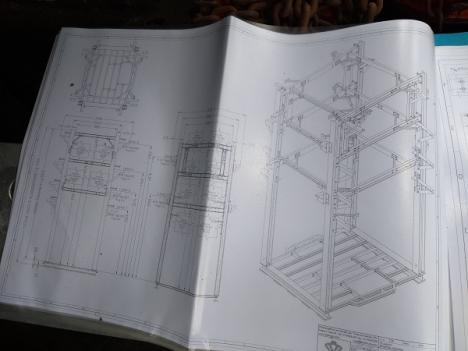
The carillon will be an exact replica of the 1730 carillon. Where did you find those plans?
Once again that was a lucky coincidence. The sizes and shapes of the 40 original bells and clappers were drawn by bell-founder Constant Sergeys around 1880. His grandson Jacques, the last Belgian bell-founder, had that booklet somewhere in his archives. When I visited him last year, he told me that he had found something about the Park Abbey carillon. Nota bene: the project was already up and running at that time! They were wildly enthusiastic at bell-foundry Eijsbouts when they saw the booklet. It allows us to come close to the old sound image.
I was also assisted by the volunteers at the abbey archives. They transcribed a lot over the years and this helped me in my quest.
How far along is the project?
The bell cage is in place, in the open part of the abbey tower. The modern warning bells that hung there were taken down and will resound in Averbode Abbey in the future. So it's very quiet on site for the time being. But the new bells have been cast and tuned – we are going to test them in mid-August.
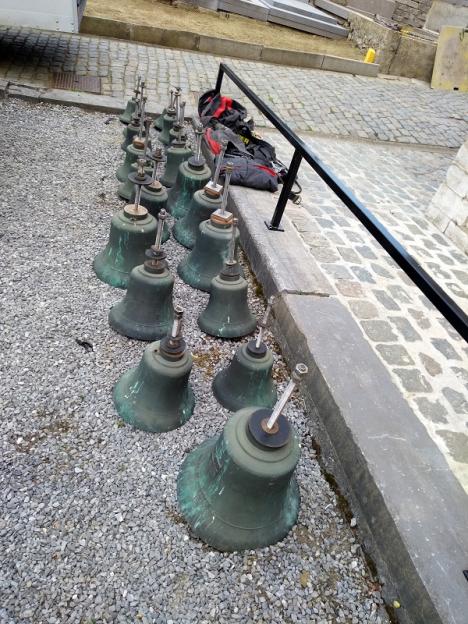
When can we expect them in Park Abbey?
The bells will be delivered on September 10. The prior, Father Jef, will bless them. The bells will be on display in the abbey's central courtyard on September 11-12. Everyone will be able to admire them. The 40 bells will be hoisted into the tower on September 13. This will be followed by a month of assembly work, then we will have about one month to practice, make adjustments, etc.
When can local residents expect to hear carillon sounds?
As from October 5. First I will be rehearsing on a special practice keyboard that will be installed in the Church of Saint John the Evangelist. I need to rehearse because the keyboard of this carillon differs slightly from modern carillon keyboards. The pedal keys are located more to the left and the batons of the keyboard are slightly closer together. Local residents shouldn't worry if they hear a discordant note from time to time in October (laughs).
And the solemn inauguration will take place on November 11?
That's right. The 100th anniversary of the Armistice will be commemorated on 11 November 2018. Every bell in the country will resound at 11:00. The official inauguration of the Peace carillon, to which donors from Leuven and Neuss are invited, will follow 15 minutes later. In the afternoon there will be a carillon happening, which includes tours and three 30-minute carillon concerts. We will welcome Carl Van Eyndhoven, city carillonneur in Mol, and Arie Abbenes, former city carillonneur of Utrecht and historic advisor of the Peace carillon. I will also perform one of the concerts.
I'm going to play 'A Sacred Suite' and other melodies on November 11. That is a carillon piece that was specially composed for the occasion by carillonneur Geert D'hollander. It's a very nice piece, based on three Gregorian themes that resounded on Norbertine carillons in the 16th century. The city of Leuven will distribute that piece and request that carillonneurs around the world play it on November 11.
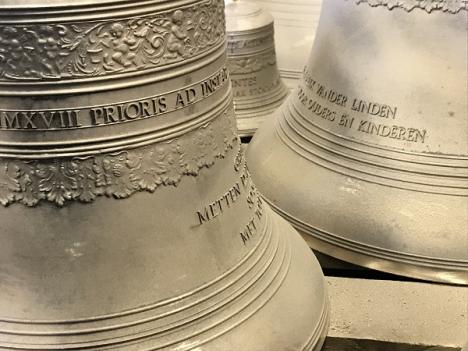
Are you only going to play peace songs?
No, we are going to play a few peace songs but we also want to show the carillon's other musical possibilities. After all, a lot of mundane music was played in South Netherlands abbeys. That allowed the fathers to enjoy a bit of relaxation.
There is a public call for peace songs, which we want to program on the machine. They will accompany the progression of time during the day. We have already received suggestions like ‘Ode to Joy’ by Beethoven and ‘Masters of War’ by Bob Dylan. The carillon will also play that music at certain moments throughout the year, such as on the International Day of Peace and Armistice Day. This will enable the carillon to fulfil its peace mission and to reflect the spirit of the abbey site.

